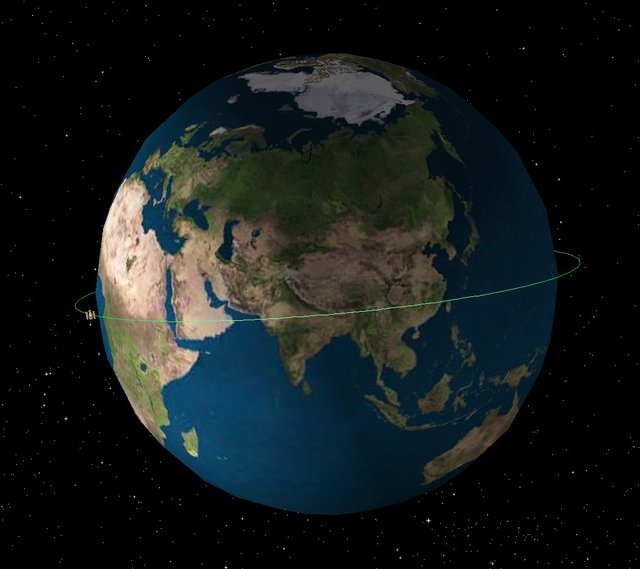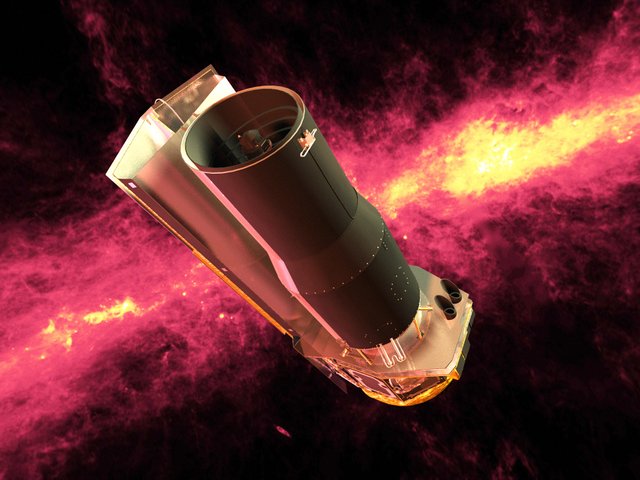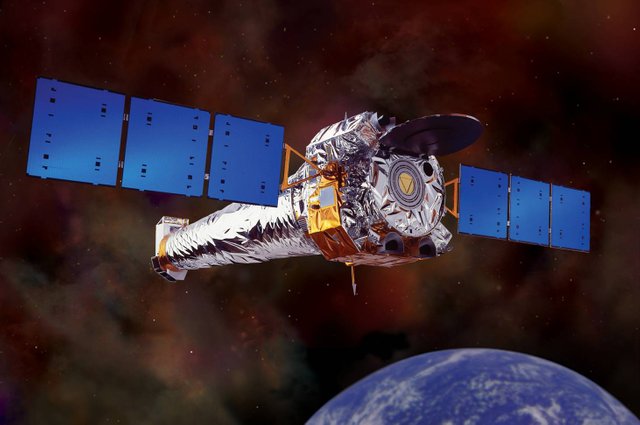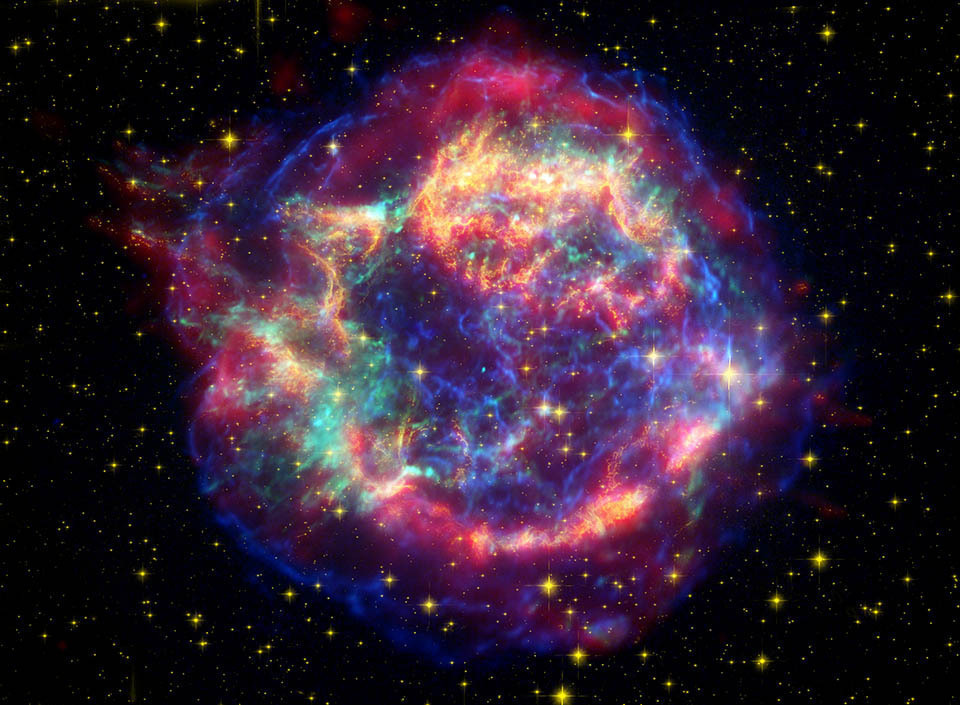How do we observe the universe?
Look at this astounding Galactic photo! Have you ever wondered how we do such observations and how do we take these spectacular visualization of our universe? So how do we photograph in a Galaxy scale and what each such photo contain and represent!

Mix of stars in an stellar cluster known as Terzan 5. Photo from Hubble's website
Our observable universe - by naked eye - is surrounded by billions of stars along with massive clouds of gas and dust. The dust clouds block our view in visible light toward outer space, but how do we see and learn about galaxies far away from us? NASA’s Great Observatories use an intelligent combination of three different wavebands of light from three different telescopes to bring the heart of our galaxies closer to our eyes: Visible data from the Hubble Space Telescope and usually shown in yellow in the photos; infrared data from the Spitzer Space Telescope and colored in red; and X-ray data from the Chandra X-ray Observatory in green and blue.
Hubble Space Telescope
Hubble is best known for seeing objects that glow in visible light, which are typically in the thousands of degrees. Think of a yellowish red melting glass at 2800 F (1500 C) emitting that visible light that we can see by our eyes.
Hubble sees the delicate filamentary structures of Galactic centers and warm gases (winds and radiation) that have been heated by clusters of bright, massive stars, with complex twisting structures.
 The actual Hubble Space Telescope. Photo Ref.
The actual Hubble Space Telescope. Photo Ref.

Hubble orbits around the Earth at an altitude of approximately 540 kilometers (340 mi) to 4,000 km (2,500 mi). Photo Ref.
The Spitzer Space Telescope
Spitzer detects infrared light that cannot be detected by naked eye and this provides an spectacular view of the center of the galaxies. Galactic Center Regions in space are like the downtown in large cities in a cloudy day crowded, active, and vibrant place -- but surrounded with massive clouds of gas and dust. The hundreds of thousands of stars in the center of the galaxies covered in the dust cannot be seen by our eyes in visible light but they heat the nearby gas and dust. These dusty clouds glow in infrared light detectable to Spitzer telescope.
 The Spitzer Space Telescope Photo Ref.
The Spitzer Space Telescope Photo Ref.
The Chandra X-ray Observatory
Chandra detects X-rays emitting from the hottest and most exotic objects with high-energy features in the galaxies. The central region is the most energetic place in a galaxy. The diffuse X-ray light comes from gas heated to millions of degrees by outflows from the supermassive black hole, winds from giant stars, and stellar explosions!
 The Chandra X-ray Observatory. X-rays are blocked by Earth's atmosphere, remember the Ozone shield, so Chandra must orbit above it, and it orbits at an altitude of 139,000 km (86,500 mi) in space. An Observatory in Cambridge, MA, hosts the Chandra X-ray Center which operates the satellite, processes the data, and distributes it to scientists around the world for analysis. Photo Ref.
The Chandra X-ray Observatory. X-rays are blocked by Earth's atmosphere, remember the Ozone shield, so Chandra must orbit above it, and it orbits at an altitude of 139,000 km (86,500 mi) in space. An Observatory in Cambridge, MA, hosts the Chandra X-ray Center which operates the satellite, processes the data, and distributes it to scientists around the world for analysis. Photo Ref.
Now that we know how these spectacular images being captured, with just a little more effort than pressing a botton on our phones or camera, how about you enjoy this amazing Image of Cassiopeia A taken by Hubble, Spitzer and Chandra.
 The supernova remnant Cassiopeia A, it is made up of images taken by Spitzer (red); Hubble (yellow); and Chandra (green and blue). Link
The supernova remnant Cassiopeia A, it is made up of images taken by Spitzer (red); Hubble (yellow); and Chandra (green and blue). Link
But OMG this spectacular, three-dimensional, fly-through movie of the magnificent Orion nebula, a nearby stellar nursery, created By NASA by combining the visible and infrared images of Hubble and Spitzer, a mind-blowing visualization. It makes you fly through and experience the universe for a moment. The transform of the two-dimensional images of Hubble and Spitzer into this three-dimensional interpretation has done through scientific knowledge and scientific intuition. And it is just published on Jan 11, 2018!
Credits: NASA, ESA, F. Summers, G. Bacon, Z. Levay, J. DePasquale, L. Hustak, L. Frattare, M. Robberto and M. Gennaro (STScI), and R. Hurt (Caltech/IPAC) [Link](http://hubblesite.org/video/1005/news/109-scientific-visualizations)The information presented in this article has been my learning over time on this topic mainly from Hubble website, NASA Spitzer website, Chandra, and NASA Astronomy Pictures Daily, their website and their Insta
I am very new to #steemit and had so much fun tonight creating this post. I just graduated with my PhD in physics in May 2017, love astrophysics, but I do research in the exact opposite spectrum. Learning about the tiniest molecules inside living cells in our body. Basically I do image mRNAs and other molecules under the microscope (photography in another extreme scale) and build models on how do cells sense their environment and how this regulates the genes; Epigenetic! I will write later on how do we do this. Don't forget to comment, give me your feedbacks, and follow; and I am super interested to learn about your stuff.
#cheers
#love
#blog
#life
#universe
#Science
#photography
#space
#NASA
#Hubble
#Spitzer
#Chandra
Hossein
A shoutout to @steemstem for their super interesting article on post, and in general writing, qualities!

Hi @hjashnsaz:)
Welcome to steemit.
Nice write up and congrats on getting your Phd in physics.
You have included all the references for your images, would mind adding the references to the text please quickly:)
eg: The Textbooks you read or the websites you used for research.
You can also use this post to help you with your image placement and to insert their source in future posts: https://steemit.com/steemit-help/@krnel/how-to-align-images-in-steemit-posts-left-right-and-center
I would also like to invite to become a member of SteemSTEM: https://discord.gg/MkkpBH
Thank you:)
Hi @zest, thanks so much for the welcome and suggestions!
I actually wrote up the text myself, I might have seen the words and some expressions that I used here and there, but nothing completely copy-paste!
P.S. thanks so much for the link, I had actually hard time perfectly aligning the sid-by-side photo!
My pleasure. I am confident you didn't copy and paste :)
I think this post will help you understand why I asked for references:) : https://steemit.com/steemstem/@steemstem/being-a-member-of-the-steemstem-community
If you have questions please feel free to ask:)
@zest I read the article and I am so glad a blog such as @steemstem exist here! Great stuff that I will go through! #stem #science
And, I have now added my general references as well! @zest
Thank you:)